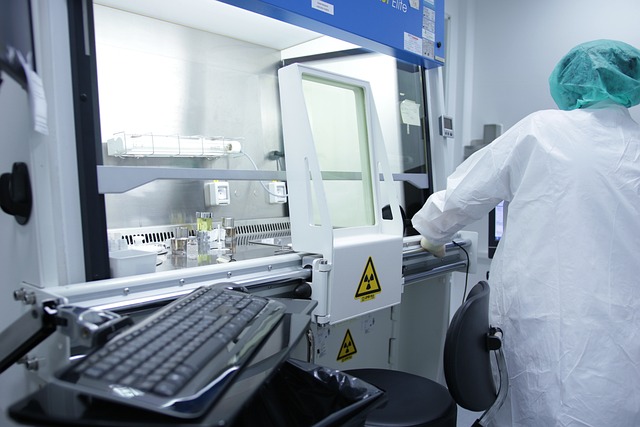
Here is our comprehensive guide on “Professional Cleaning of Commercial Science Laboratories.” Labs are not just places for experimentation; they are crucibles of discovery where precise cleanliness is imperative for accurate results, researcher well-being, and regulatory compliance.
Let this guide be your compass as you navigate the complex world of professional cleaning in commercial science laboratories, where cleanliness is not just a practice but an essential component of the scientific endeavor. In this in-depth investigation, we take you on a journey through the complexities of upholding the highest standards of hygiene in these labs. From daily cleaning procedures to specialized maintenance tasks, safety protocols, and compliance records, we unravel the comprehensive strategies that drive these labs to new heights of excellence.
Importance of Cleanliness in Science Laboratories
1. Ensuring Experiment Accuracy
A clean laboratory environment is essential for maintaining the accuracy of scientific experiments. Contaminants or residues from previous experiments can skew results, compromising the reliability of research findings.
2. Safeguarding Researcher Health
The health and safety of laboratory personnel are paramount. Regular and thorough cleaning prevents exposure to potentially harmful substances, ensuring a safe working environment and reducing the risk of accidents or health issues.
3. Preserving Equipment Functionality
State-of-the-art scientific equipment requires a pristine environment to function optimally. Regular cleaning prevents the accumulation of dust and debris on sensitive instruments, extending their lifespan and maintaining their accuracy.
4. Meeting Regulatory Standards
Compliance with stringent regulatory standards is non-negotiable in commercial science laboratories. A consistently clean facility is essential for meeting these standards, avoiding legal complications, and upholding the reputation of the laboratory.
5. Enhancing Laboratory Aesthetics
Beyond functionality, a clean and organized laboratory contributes to a positive working atmosphere. An aesthetically pleasing environment fosters a sense of professionalism, pride, and focus among laboratory personnel.
Daily Cleaning Procedures for Science Laboratories
Surface Disinfection
Daily disinfection of laboratory surfaces is crucial for eliminating bacteria, viruses, and other contaminants. Use a suitable disinfectant with broad-spectrum efficacy, paying special attention to high-touch areas like benchtops, equipment controls, and doorknobs.
Spill Cleanup Protocols
Establish spill cleanup protocols and ensure that laboratory personnel are trained to handle spills promptly and safely. The type of spill will dictate the cleaning agents and protective equipment required, emphasizing the importance of tailored procedures.
Equipment Wiping and Calibration
Daily wiping of laboratory equipment surfaces prevents the buildup of residues. Calibrate sensitive instruments regularly to maintain accuracy. Use recommended cleaning agents and follow manufacturer guidelines to avoid damage to equipment.
Glassware and Utensil Sterilization
Sterilize glassware and utensils daily to eliminate any potential contaminants. Autoclaving or using other sterilization methods ensures that items are free from microorganisms that could compromise experimental results.
Floor Maintenance
Regular floor cleaning is essential for maintaining a clean laboratory. Use appropriate cleaning agents suitable for the type of flooring material. Pay attention to corners and edges where dust and debris may accumulate.
Weekly and Monthly Laboratory Maintenance Tasks
Ventilation System Cleaning
Clean ventilation systems, including hoods and ductwork, on a weekly basis to ensure proper airflow. Adequate ventilation is crucial for maintaining air quality and preventing the buildup of fumes or airborne contaminants.
Deep Cleaning of Laboratory Furniture
Perform a deep cleaning of laboratory furniture on a monthly basis. This includes chairs, workbenches, and storage units. Disassemble furniture where possible for thorough cleaning, addressing hidden areas where contaminants may accumulate.
Inventory and Chemical Storage Audit
Conduct a monthly inventory and chemical storage audit. Dispose of expired or unused chemicals according to laboratory safety protocols. Organize chemical storage to prevent cross-contamination and enhance safety.
Microscope and Instrument Maintenance
For laboratories equipped with microscopes and other precision instruments, conduct regular maintenance checks. Clean lenses, adjust focus mechanisms, and follow manufacturer guidelines for instrument care to ensure optimal performance.
Pest Control Measures
Implement pest control measures on a monthly basis to prevent infestations. Seal entry points, store food items in designated areas, and collaborate with professional pest control services to address any signs of pests promptly.
Specialized Cleaning for Laboratory Equipment
Centrifuge Cleaning
For centrifuges, disassemble and clean rotor components thoroughly. Use mild detergents and brushes to remove debris. Ensure that all parts are dry before reassembly to prevent the growth of mold or bacteria.
Incubator Decontamination
Decontaminate incubators regularly to eliminate microbial growth. Follow manufacturer guidelines for cleaning agents and ensure that the incubator is thoroughly dry before reintroducing samples.
Fume Hood Maintenance
Clean and maintain fume hoods to ensure proper functionality. Remove residues from surfaces, inspect ventilation systems, and verify that safety features are operational. Regular maintenance enhances the safety of experiments involving hazardous materials.
Laboratory Oven Sterilization
Sterilize laboratory ovens monthly to eliminate contaminants and ensure accurate temperature control. Remove shelves and trays for thorough cleaning, and inspect gaskets for signs of wear or damage.
Electrical Equipment Care
For electrical equipment such as spectrophotometers or chromatographs, follow manufacturer guidelines for cleaning and maintenance. Use compressed air to remove dust from electronic components and avoid using abrasive cleaning agents.
Laboratory Safety Protocols and Training
Chemical Hygiene Training
Ensure that laboratory personnel receive comprehensive training in chemical hygiene. Training should cover proper handling, storage, and disposal of chemicals, as well as emergency response protocols for chemical spills.
Personal Protective Equipment (PPE) Usage
Emphasize the importance of PPE usage among laboratory staff. Mandate the use of appropriate protective gear, including gloves, goggles, and lab coats, to minimize the risk of exposure to hazardous substances.
Emergency Response Drills
Conduct regular emergency response drills to ensure that laboratory personnel are well-prepared for accidents or spills. Familiarity with emergency eyewash stations, safety showers, and evacuation procedures is crucial for a prompt and effective response.
Waste Disposal Training
Train laboratory personnel on proper waste disposal procedures. Segregate chemical waste according to compatibility and dispose of it in accordance with local regulations. Maintain an updated inventory of hazardous waste and ensure its secure storage.
Documentation and Compliance Records
Maintain detailed documentation of laboratory cleaning activities, safety training sessions, and compliance records. This documentation is invaluable during safety audits, inspections, and accreditation processes.
Conclusion
The professional cleaning of commercial science laboratories is not merely a routine but a commitment to the principles of scientific integrity, safety, and innovation. By implementing the strategies outlined in this comprehensive guide, laboratories can create an environment that fosters accurate experimentation, prioritizes the well-being of researchers, and upholds the highest standards of cleanliness. Let this guide serve as a roadmap to elevate your laboratory to the pinnacle of hygiene, ensuring that it remains a beacon of discovery, innovation, and safety in the ever-evolving landscape of scientific exploration.







